So, what is the deadliest virus on Earth? You’d think this might be an easy enough question to answer but it turns out there is more than one way to define deadliest. For instance is it the virus that kills the most people overall (death rate); or is it the disease that has the highest case fatality rate, i.e. kills the most infected people. For the majority it will be the disease with the highest fatality rate, the one that is a sure-fire death sentence if you ever catch it.
Ironically it is the other diseases, the ones that have reassuringly low case fatality rates that actually kill by the million. There is a reason for this – the viruses which cause the most virulent diseases tend to burn themselves out by killing off their hosts quicker than they can spread. Two particularly good illustrations of this phenomenon are the Ebola virus, with a 90% fatality rate which has killed around 30,000 people to date and the Spanish influenza pandemic which wiped out an estimated 100 million people despite the fact it has a case fatality rate of less than 3%.
As well as the two factors of overall death rate and case fatality rate mentioned above there is the historic dimension – which virus has killed the most people throughout history?
Given these various criteria for defining how deadly a virus is I will be considering all these to provide not only an overall top ten virus list but some separate statistics at the end of the article.
10. Dengue fever
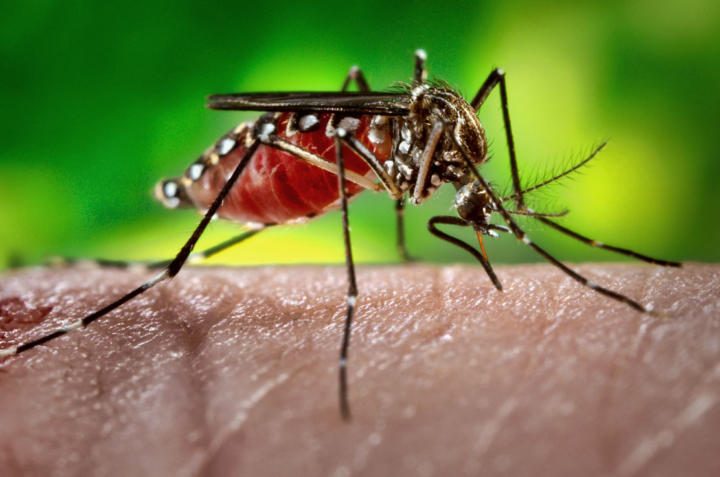
Dengue fever is a mosquito-borne infection that was first described nearly 2,000 years ago in China. After gradually becoming established in other countries with populations of A. aegypti mosquitoes, the range of the disease accelerated in the 18th century. This was attributed to the slave trade and during World War II the spread accelerated further, particularly of the more dangerous forms.
In more recent years globalization has had its impact with dengue rates increasing by 30 times since the 1960s making this a major emerging disease.
Like many of these diseases the vast majority of people have either no symptoms or fairly mild symptoms such as a non-specific fever. Sometimes dengue is referred to as “breakbone fever” which reflects the intense pain which may be felt in the muscles and joints.
For the unlucky few the illness may develop into “severe dengue” with the risk of potentially fatal dengue hemorrhagic fever and dengue shock syndrome. Occurring in less than 5% of cases the main issue here is the increased permeability of the blood vessels. This can result in vomiting blood, organ damage and shock.
Now endemic in 110 countries dengue infects up to 500 million people a year and causes approximately 20,000 deaths. The grim reality is these figures are likely set to rise.
9. Smallpox
Smallpox has been eradicated right? Well, the WHO certified it was no more in 1979, however, both the U.S. and former USSR held samples of the virus for research. There are rumours that after the breakup of the Soviet Union some of these samples were unaccounted for. Even if the smallpox virus was extinct it has been suggested that it could be re-engineered from the digital viral genome and inserted into a related pox virus shell.
The good news is that at present,for all intents and purposes smallpox is extinct in the wild. íHistorically though it has had a devastating effect. Emerging around 10,000 BC there have been a number of epidemics resulting in massive loss of life. Smallpox is both highly contagious and, certainly in historic times, dangerous with fatality rates of up to 90% recorded.
Smallpox was at its most devastating when introduced to the New World by the 18th century European explorers. Whether accidental or not it is estimated that around half of the native aboriginal population of Australia were killed by smallpox during the early years of British colonisation. The disease was similarly disastrous to the native American people and in South America.
Despite the fact that Edward Jenner developed a vaccine for smallpox in 1796 it has been responsible for somewhere in the region of 300 to 500 million deaths since the 1800s alone.
In terms of appearance smallpox is particularly shocking with the body becoming covered in pox – fluid filled pustules. These can occur in the mouth and throat too along with a number of complications including blindness. The mortality rate of the disease largely depends on the course it takes with malignant and hemorrhagic smallpox invariably being fatal.
8. Measles

Most people in the developed world wouldn’t regard measles as being even remotely dangerous. It used to be incredibly common with around 90% of all children having had the measles by the time they were 12. Now-a-days, with routine vaccination in many countries the incidence has been vastly reduced.
What might shock you though is that it is reckoned that between 1855 and 2005 measles was responsible for 200 million deaths worldwide. Even in the 1990s measles was killing over 500,000 people a year. Even today, after the advent of cheap, available vaccines, measles is one of the major causes of death amongst young children with over 100,000 deaths a year.
Where measles has caused the greatest devastation is in communities that have not been previously exposed. In the 16th century Central America was ravaged by measles which was brought over by Europeans. Honduras, for example is said to have lost half its population in a measles epidemic in 1531.
A normal case of measles involves fever, a cough and rash. However, complications are relatively common and this is where the danger lies. Occurring in around 30% of cases these range from relatively mild e.g. diarrhea through to pneumonia and inflammation of the brain – all of which may be fatal. Other complications include blindness.
7. Yellow fever
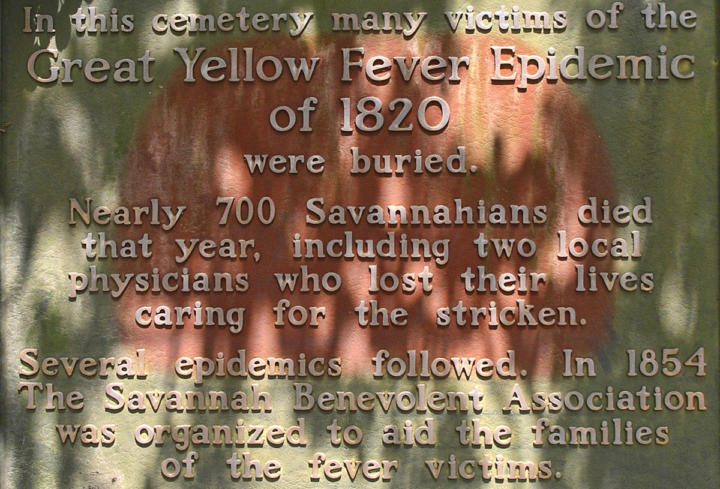
Another of history’s big killers is yellow fever. Also known as the “yellow plague” and “vomito negro” (black vomit) , this acute haemorrhagic disease has been responsible for a number of serious outbreaks over the centuries.
For most recovery from yellow fever is complete, but in around 15% of cases a second , more serious stage occurs. In these cases there may be bleeding from the mouth, nose, eyes or stomach. Around 50% of the patients who enter this toxic phase are dead within 7 to10 days. Whilst in general a 3% fatality rate is expected during epidemics this has been observed to reach 50%.
As with many of these viral infections it seems the depths of Africa is where it originated. In the early colonial days it was noted that an outbreak in a village would cause the natives to suffer from nothing more serious than flu-like symptoms whereas the majority of European colonists would die. It is thought this difference in severity of the infection was caused by a prolonged, low-level exposure during childhood leading to some degree of immunity.
It could be argued that there was some degree of schadenfreude in the fact that it was slavery and the exploitation of Africa which lead to the epidemics in Europe and North America during the 18th and 19th centuries. Probably the best known of these was the 1792 outbreak in Philadelphia, the then capital of the U.S.. It is said that president George Washington fled the city whilst 10% of those who remained died.
This pattern was mirrored throughout America with an estimated 100,000 to 150,000 deaths during the 18th and 19th centuries.
Today, despite an effective vaccine existing, there are in the region of an annual 200,000 cases of yellow fever worldwide, killing 30,000 people each year.
6. Lassa virus

You could think of Lassa virus as “Ebola-lite” – but then again it kills as many people in West Africa each year as Ebola did during the height of the 2013-15 epidemic. In addition the symptoms are easily confused with Ebola with both classified as acute viral hemorrhagic fevers. The Lassa virus infects virtually every tissue in the human body and outbreaks are usually started through exposure to the local Mastomys rats.
If you were in any doubt of the dangers posed by Lassa virus then its biosafety level 4 (BSL-4) should convince most of you. This is the highest level of biosafety reserved for working with pathogens that are likely to cause death and for which there are no vaccines or treatments. To put this in perspective, MRSA, HIV and Hepatitis viruses are all classified as biosafety level 2.
Lassa fever causes somewhere in the region of 5,000 deaths annually. Endemic throughout West Africa it is estimated to infect over 300,000 people each year. Whilst a fortunate majority show no symptoms those who do face a fatality rate of 15-20%. In epidemics the fatality rate from Lassa virus has been seen to reach 50%. Not quite that of Ebola or Marburg viruses, but a scary number all the same.
5. Hepatitis
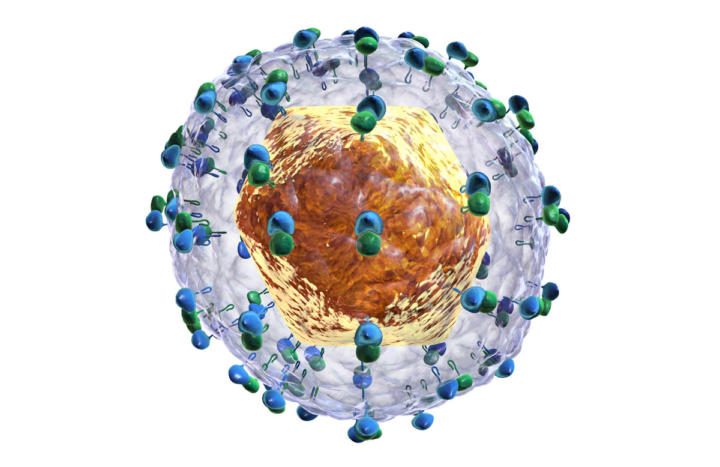
Hepatitis is the name given to collection of viral diseases which attack the liver. There are 5 forms of contagious hepatitis which are given letters A to E. Of all these the most serious are hepatitis B and hepatitis C which together cause almost a million deaths per annum. These are often passed from mother to child but can also be spread via blood transfusions, tattooing, dirty syringes and sexual activity.
Hepatitis B causes the largest share of fatalities each year (around 700,000). It is a fairly unremarkable illness with no gory symptoms. The majority of deaths are the result of the illness slowly attacking the liver over a period of years eventually resulting in either liver cancer or cirrhosis. Whilst becoming infected with hepatitis B as an adult usually results in an acute episode of illness which ends up with a full recovery, those infected as children are more likely to develop the long term condition.
Although the overall death rate from hepatitis C is lower than B it still kills an estimated 350,000 people a year, mostly in the developing world. Figures suggest that there are around 200 million people (or 3% of the global population) living with hepatitis C.
4. Rabies

Rabies is one of several deadly diseases belonging to the Lyssavirus genus. This name is derived from Lyssa, the Greek goddess of rage, madness and frenzy, and the word rabies itself comes from the latin for “madness”. It has been one of mankind’s most feared diseases since ancient times and with good reason.
The best known form of rabies is referred to as “furious rabies” and affects 80% of those infected. This stage includes the classic symptoms of confusion, agitation, paranoia and terror. An infected person may also display hydrophobia (fear of water). In this seemingly bizarre condition the patient becomes panicked when given anything to drink. The most likely reason is that rabies infects the salivary glands at the back of the mouth so it can be passed on in a bite. This infection also causes the muscles of the throat to go into excruciating spasm when salivation increases on presentation of a drink.
Infection with rabies occurs when bitten or scratched by an infected animal – most commonly dogs or bats. Whilst there may be some flu-like symptoms after the bite the disease is generally without symptoms during an incubation phase. This usually lasts for 1 to 3 months but can take years as the infection creeps through the nervous system towards the brain.
Rabies is difficult to diagnose and unless suspected after a bite may well go undetected until neurological symptoms develop. At this point it is almost definitely too late for the patient; rabies has an almost 100% fatality rate within a matter of days . In fact only 5 people have ever survived rabies and the first was Jeanna Giese in 2005. She was treated with a new approach (the Milwaukee protocol) involving an induced coma and survived to make an almost full recovery. Despite the success in this case, this method still only has an 8% chance of success.
Fortunately a bite from a rabies infected animal is no longer a certain death sentence. If you can receive medical treatment in the form of post-exposure prophylaxis (PEP) within 10 days there is an almost 100% chance you will survive. There is also an equally effective vaccine.
Nevertheless, nearly 60,000 people die of rabies every year, mostly in Africa and southern Asia. Over a third of these deaths are in India and dog bites are still the main culprit.
3. Viral Hemorrhagic Fevers (Filoviruses)
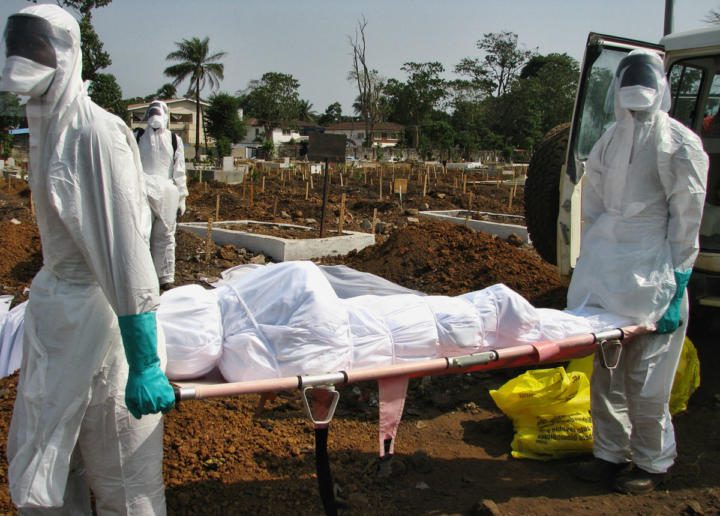
If any disease can cause fear in the 21st century it is the viral hemorrhagic fevers from the filovirus family. These include Ebola and Marburg viruses both of which have no effective treatment, no vaccine and a fatality rate of up to 90%. Combines with some very unpleasant symptoms these are potentially the deadliest viruses on earth.
In terms of diagnosis Marburg and Ebola are clinically indistinguishable. The name of this group of viruses is a big clue to some of the symptoms – obviously a fever which is accompanied by pain throughout the body; joints, muscles, abdominal cramps, headaches. The hemorrhagic aspect comes from the way filoviruses interfere with the blood’s clotting mechanism resulting in the possibility of bleeding from each or every orifice. The more than likely death is generally due to multiple organ failure and internal tissue necrosis.
Ebola and Marburg had generally only occurred in isolated villages in Central Africa resulting in small outbreaks which rapidly burnt themselves out. However, in 2013 Ebola arrived in the West African country of Guinea where it was not recognised as such until it had time to spread rapidly. Over the next 2 years the Ebola epidemic raged across six countries infecting 25,000 people of which around a half died.
The largest outbreak of Marburg virus was in 2004 in Angola. Out of 252 infected 227 died, i.e. 90%. In an earlier epidemic in the Congo the fatality rate was 83%.
Both Marburg and Ebola are thought to have spread to humans from wild animals. Although the first reported cases of Marburg occurred in researchers working with African green monkeys it is believed that the natural host species are bats. This is also the case with Ebola which makes bats carriers of some of the most feared diseases on earth.
2. HIV / AIDS
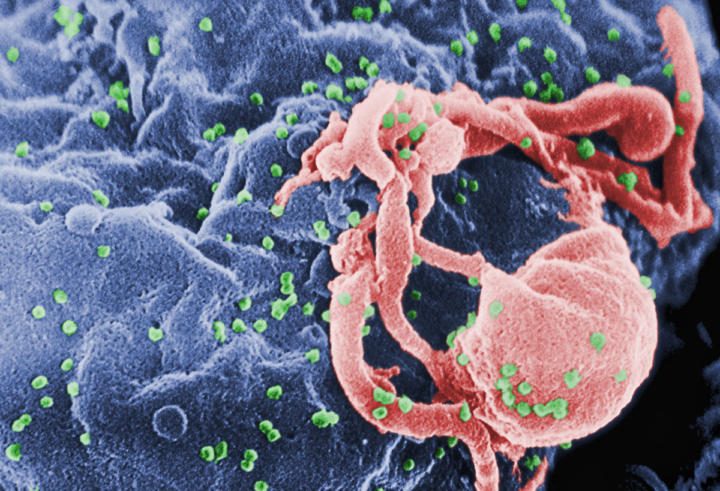
Over the past three decades, since AIDS became headline news, people have become a little desensitized to what is a devastating disease. Huge progress in antiretroviral drugs have meant that given the right regimen of medicines infection with HIV is not the death sentence it once was.
The disease is yet another to have originated in Central Africa where it is believed to have been harboured in monkey populations for millions of years before crossing to humans in the mid 20th century. Exactly how this happened is not known but it is believed that the monkey version (SIV) was passed to humans via eating bushmeat – this later mutated into what we know as HIV.
It is suspected that HIV existed some time before it became headline news; the first recorded case was in the Congo in 1959 and there was what appeared to be a case in the U.S. in the mid 1960s.
HIV attacks the immune system which firstly stops it being destroyed and secondly makes the person susceptible to a wide range of very unpleasant infections. Once the immune system has been compromised beyond a certain level the disease is classified as AIDS. Without an effective immune system the body is at risk from a host of bacteria, viruses, fungi, and parasites. There are also a number of cancers that are prevalent in those with HIV. Among the most common causes of death for those infected with HIV are T.B. and pneumonia but there are any number of other complications.
The key reason it has been so difficult to find an outright cure for HIV is the fact that it is constantly and rapidly changing. It reproduces rapidly (around 10 billion new individual virions per day) and the mutation rate is high. Even in a single person the genetic variety of the virus can resemble an evolutionary tree with different organs infected with virtually different species.
Today, there are about 40 million people living with HIV, mostly in sub-Saharan Africa. Sadly, only around half of those infected have access to the required drugs so the global death rate from AIDS is still shockingly high. Estimates suggest there are nearly 2 million deaths every year and over the last 30 years the virus has claimed over 25 million lives.
1. Influenza
Influenza or flu as it is more commonly known is hardly the most exciting choice for a list of deadly viruses. Everybody gets flu and for the majority it is not particularly nice but no big deal. However, every year influenza racks up a massive number of deaths by picking off the vulnerable – the old, the very young and the sick. Despite there having been a safe and effective vaccine for over 60 years, influenza still causes up to half a million deaths annually.
But this is just the baseline figure, on top of this there are the occasional devastating epidemics where a particularly virulent strain of the virus develops. The 1918 “Spanish Flu” pandemic is a prime example of this. It is believed to have infected almost a third of the global population and caused up to 100 million deaths. During the epidemic the fatality rate was 20% of those infected compared to the usual 0.1% from seasonal flu. One reason the Spanish flu was so deadly was it killed healthy people; the particular strain caused the immune system to turn on itself creating an overreaction known as a cytokine storm. Therefore those with the strongest immune systems were at the greatest risk.
No other illness has even come close to figures like this and this is what makes influenza so dangerous. The flu virus has the ability to frequently combine and mutate to form new strains. At present the most deadly strains and the most contagious strains are thankfully distinct. One fear is that the a potentially lethal strain such as H5N1 bird flu, which is is not able to spread from person-to-person, would only require a small genetic event to create a possible epidemic. Although to date there have only been just over 600 cases of bird flu nearly 60% of these have been fatal making this one of the most virulent human diseases.
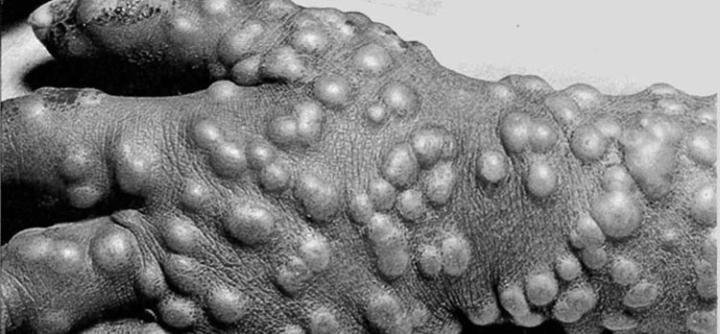
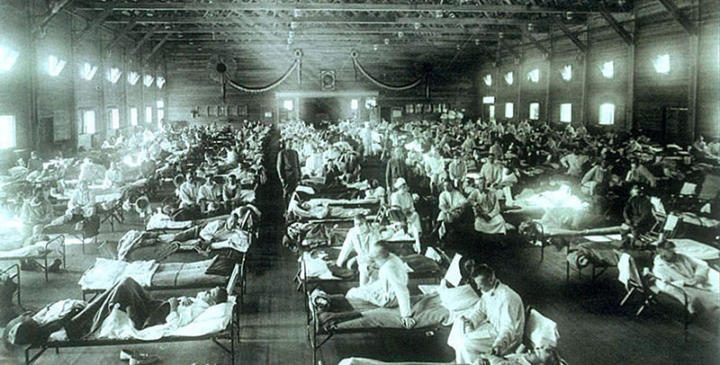
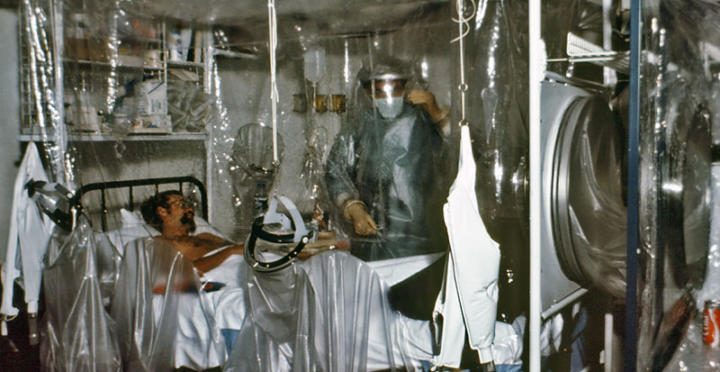

Herpes is not treatable – all you can achieve is to put it back to sleep.
Could also be Shingles (age version) or whatever the vaccine was made with; you know…small pox or other …
Putting it to sleep is pretty much the treatment. I believe it just lies dormant in nerve cells, and can remain that way indefinitely
Nope, confidential researches are yet being made. We’re closer than you might think.
where is the black plague? killed over 200 million
Why would bubonic plague be on a list of VIRUSES?
What about the Coronavirus?
People are dying! 🙁
Not even close… yet
Re: Spanish flu … article claims a 100 million killed and a 3% case fatality rate … it was in 1918 … that many killed with a 3% case fatality rate implies 3.3 billion were infected … which is problematic given the population of earth in 1918 was less than 2 billion.
I see your point. From what I read the overall number of deaths was estimated at between 50 and 100 million so I guess the mortality rate would vary accordingly. Further down the article I cited a 20% mortality rate – not sure where that came from, but probably needs further qualifying…
Where is herpes? Parkinson’s, Alzheimer’s, cancer, etc
Where to begin….
Herpes is quite treatable, plus it covers a range of infections so you would need to be more specific. Alzheimer’s is currently not believed to be a virus and is certainly not contagious, which would be one of the key criteria for being on this list.
As for cancer, there are certain types that could have a viral component, or at least be secondary to a virus. However, most do not and are the result of malignant DNA mutations, which again are not contagious – although there is some evidence that certain metastatic forms could be transferable under very specific conditions.